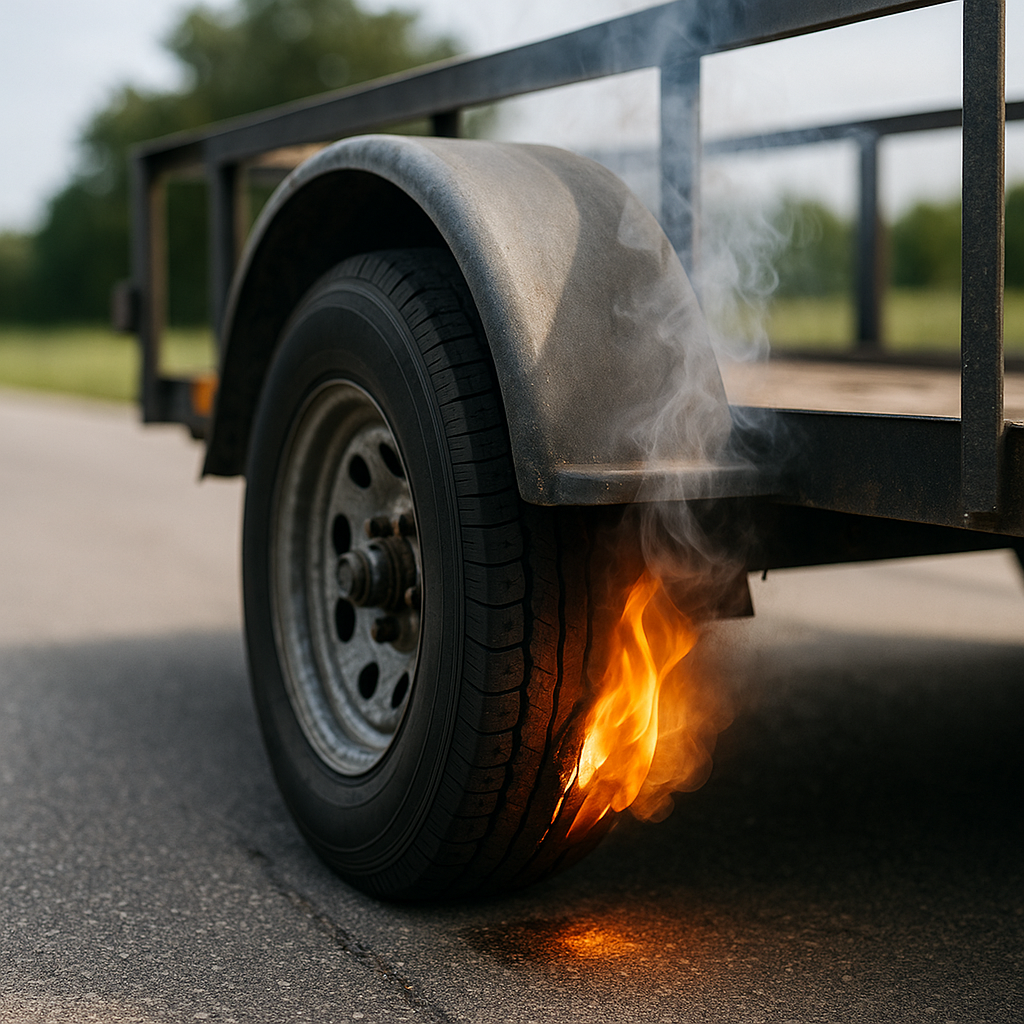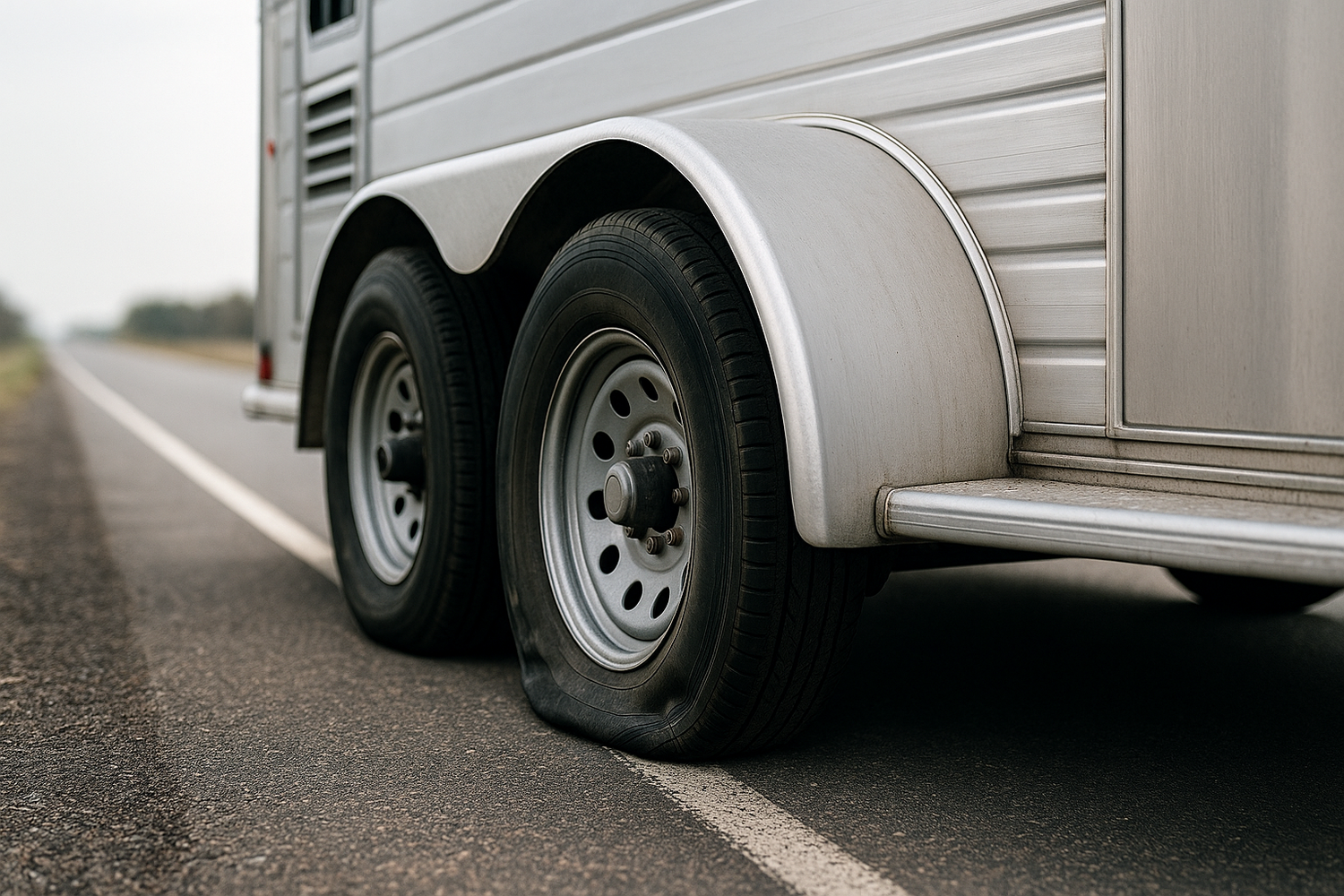Maintaining the right tire pressure is crucial for the safety and performance of your camper. Tire pressure monitoring systems (TPMS) play a vital role in ensuring that your tires are not just inflated to the correct level, but also in monitoring their condition over time. When tires are under-inflated, they can cause a range of issues, including poor fuel efficiency, increased tire wear, and even dangerous blowouts.
Understanding the importance of tire pressure monitoring extends beyond simple tire maintenance. Here are some critical reasons why investing in the best camper tire pressure monitoring system is essential:
- Enhanced Safety: Regular monitoring helps prevent accidents caused by tire failure.
- Improved Fuel Efficiency: Properly inflated tires reduce rolling resistance, leading to better gas mileage.
- Longer Tire Lifespan: Maintaining optimal tire pressure extends the life of your tires, saving you money in the long run.
- Real-Time Data: Advanced TPMS provides alerts and data on tire conditions, allowing for proactive measures.
By choosing a reliable TPMS, you ensure that your camper tires remain in optimal condition, enhancing your overall travel experience. Tow with peace of mind, knowing that trailerwatchdog is standing guard.
Key Features to Look for in Monitoring Systems
When selecting a tire pressure monitoring system (TPMS) for your camper, it’s essential to consider several key features that will enhance your experience and provide comprehensive safety. Below are the critical features you should look for in the best camper tire pressure monitoring system:
- Real-Time Monitoring: The system should provide continuous, real-time tire pressure and temperature readings. This feature allows you to address any issues before they escalate into dangerous situations.
- Wireless Connectivity: Opt for a TPMS that uses wireless technology for easy installation and convenience. Wireless systems reduce the need for complex wiring and allow for a cleaner setup.
- Multiple Tire Monitoring: Ensure the system can monitor all your camper tires, including the spare. This is crucial for ensuring that every tire is in optimal condition during your travels.
- Visual Alerts: Look for systems that offer visual and audible alerts. This feature helps you react quickly to any changes in tire pressure or temperature.
- Durability and Weather Resistance: Given that campers often travel through various climates, a durable and weather-resistant system ensures longevity and reliability.
- Easy Installation: A user-friendly system that is easy to install will save you time and frustration. Look for kits that come with all necessary components and clear instructions.
By focusing on these key features, you can choose a TPMS that best suits your needs and provides peace of mind while on the road.
Top Rated Tire Pressure Monitoring Systems for Campers

When it comes to ensuring the safety and performance of your camper, investing in a reliable tire pressure monitoring system (TPMS) is crucial. Here are some of the top-rated tire pressure monitoring systems for campers that have garnered praise from users and experts alike:
- TST 507 Tire Pressure Monitoring System: Renowned for its accuracy and reliability, the TST 507 features a user-friendly interface and can monitor up to 22 tires simultaneously. It provides real-time data and alerts for pressure and temperature changes.
- EEZTire Smart TPMS: This system is equipped with advanced wireless technology and offers a portable display unit. The EEZTire Smart TPMS is known for its excellent battery life and ease of installation, making it a popular choice among camper owners.
- PressurePro TPMS: This system provides continuous monitoring and alerts users to any abnormal tire conditions. With its robust design and weather-resistant sensors, PressurePro is built to withstand the demands of the road.
- Flow Through Sensors: Many campers prefer systems equipped with flow-through sensors for ease of use. These sensors allow for easy inflation of tires without needing to remove the sensor, saving time and hassle.
- iTPMS: The iTPMS is noted for its sleek design and smartphone compatibility. This system allows users to monitor tire pressure directly from their mobile devices, providing convenience and accessibility.
Choosing one of these top-rated systems not only enhances your driving experience but also significantly reduces the risk of tire-related issues while on the road.
Benefits of Using a Tire Pressure Monitoring System

Utilizing a tire pressure monitoring system (TPMS) can have a transformative impact on your camping experience. Here are some significant benefits of using a tire pressure monitoring system:
- Enhanced Safety: One of the primary advantages of a TPMS is the increase in safety it provides. By continuously monitoring tire pressure, it can alert you to any significant drops that may lead to blowouts or accidents.
- Improved Fuel Efficiency: Properly inflated tires contribute to better fuel efficiency. A TPMS helps maintain optimal tire pressure, which can lead to lower fuel costs and a more environmentally friendly camping experience.
- Extended Tire Life: Maintaining the correct tire pressure can significantly extend the lifespan of your tires. Over-inflation and under-inflation can cause uneven wear, leading to premature tire failure. A TPMS helps you avoid these issues.
- Real-Time Monitoring: Many modern TPMS devices provide real-time data on tire pressure and temperature. This feature allows you to make informed decisions while on the road, ensuring your camper is always in optimal condition.
- Peace of Mind: Knowing that a TPMS is actively monitoring your tires provides peace of mind during your travels. Whether you're on a long road trip or a weekend getaway, you can focus on enjoying the journey rather than worrying about potential tire issues.
Incorporating a tire pressure monitoring system into your camper setup not only enhances your driving experience but also promotes a safer and more efficient journey.
How to Install Your Tire Pressure Monitoring System

Installing a tire pressure monitoring system (TPMS) may seem daunting, but with the right guidance, it can be a straightforward process. Follow these steps to successfully install your tire pressure monitoring system:
- Choose the Right TPMS: Before installation, ensure you have the appropriate TPMS for your camper. Consider factors such as compatibility, features, and ease of use.
- Gather Necessary Tools: Gather all necessary tools for installation, which may include a wrench, screwdriver, and any specific tools provided with your TPMS kit.
- Read the Manual: Each TPMS comes with a user manual that includes detailed installation instructions. Take the time to read through it to understand the specific requirements for your system.
- Install the Sensors: Begin by installing the tire sensors. Remove the valve stem caps from each tire and attach the sensors according to the instructions. Make sure they are securely fastened to avoid any air leaks.
- Connect the Monitor: Once the sensors are installed, connect the monitor inside your vehicle. This may involve plugging it into your car’s power outlet or using a designated battery. Ensure the monitor is positioned where you can easily view it while driving.
- Calibrate the System: After installation, calibrate the system according to the manufacturer’s instructions. This step is crucial to ensure accurate readings and optimal performance.
- Test the System: Finally, test the TPMS to ensure it is functioning correctly. Drive your camper for a short distance and check the monitor for accurate tire pressure readings.
By following these steps, you can successfully install a tire pressure monitoring system, enhancing the safety and performance of your camper.
Maintaining Your Camper Tire Monitoring System

Once you've installed your tire pressure monitoring system (TPMS), it's essential to maintain it for optimal performance and safety. Regular maintenance ensures that your system continues to provide accurate readings and alerts, keeping your camper's tires in excellent condition. Here are some key maintenance tips:
- Regularly Check Tire Pressure: Even with a TPMS, it’s important to manually check your tire pressure periodically. This can help identify any discrepancies and ensure the sensors are functioning correctly.
- Inspect Sensors: Periodically inspect the tire sensors for any signs of damage or wear. Ensure they are securely attached to the valve stems and free from dirt or debris that could interfere with their performance.
- Update Firmware: Some TPMS may come with firmware updates. Check the manufacturer's website regularly for any updates that can improve the system's functionality.
- Battery Maintenance: If your TPMS uses batteries, monitor their charge levels. Replace them as needed to avoid losing monitoring capabilities.
- Keep the Monitor Clean: Regularly clean the display monitor to ensure visibility and functionality. Dust and grime can obstruct readings and alerts.
By following these maintenance tips, you can extend the life of your tire pressure monitoring system and enhance your overall driving experience. Tow with peace of mind, knowing that trailerwatchdog is standing guard.








